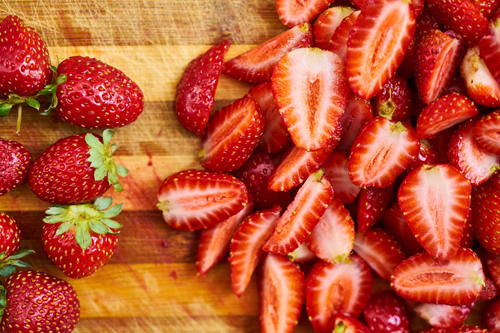How to Eat Healthy on a Budget: 5 Important Things to Consider

Healthy eating and keeping a strict food budget have a nasty habit of seeming diametrically opposed to one another. It seems like most common food knowledge requires a health-conscious eater to load up with fresh meat and vegetables, with little thought put aside to how much that might wind up costing financially in the long run. Clever cooks and food aficionados alike will find that shopping ingenuity and clever preparation can turn a scant pantry into a bounty of healthy yet affordable meals.
First and foremost, you’ll want to make sure your cookware is up to the task of taking on home cooking, as you’ll be abstaining from eating takeout as often as humanly possible. Take stock of your current vessels; If they’re old or their non-stick coating has gone off with years of neglect, it may be time to find a new set. Even those with quality stovetops can find inexpensive vessels to cook with; Finding inexpensive induction cookware isn’t as difficult as it once was several years ago. With your kitchen sorted, it’s time to solve that empty pantry and fridge problem!
1. Nutrient Density is Your Friend
Many first-time budget eaters might turn to eating foods like bread in excess to round out meal plans without breaking the bank. After all, bread is filling and can be made at home on the cheap, yet it lacks many of the nutrients needed for proper healthy living. Instead, foods with positive nutrient density should be the focus of a well-rounded diet. Lean meat is an example of nutrient-dense food that isn’t always affordable. Legumes, on the other hand, provide valuable protein and other nutrients at a much more cost-effective per-pound price.
2. Vegetables Are Key
If you’re not a fan of veggies, now’s a good time to find recipes that you actually enjoy. Filling out your plate with bulk vegetables make for a much healthier option than overdoing it with rice or other starches, though there’s always room to fit more traditional starches into meal plans as long as you keep them properly spaced out throughout your week. For example, a traditional steak-centric dinner might have fries and macaroni and cheese on the side, but you could easily swap those side dishes out for a baked potato topped with a little cheese and a fried kale or carrot plate to both round out your nutrients for the day as well as skip out on overloading on nutrient-light noodles.
3. $40 Will Get You Further than You Think
As a disclaimer, chances are you don’t want to go quite so extreme when you’re first sorting out how to approach healthy eating with budget concerns in mind. There are some interesting things to consider when looking into personal anecdotes about low-cost eating and just how much we overspend on meals that could be approached from a scientific angle; For example, a breakfast of oats paired with eggs provides valuable energy at a serving cost well under a dollar in many regions. On the downside, sticking to such strict budgets does mean you run the risk of becoming sick of your meal plans and abandoning them. If you don’t like your go-to meals well enough to eat them regularly and quit watching what you eat halfway through the month you’re no better off than when you were eating without a plan at all.
4. Cheap Meals Don’t Have to Be Boring
While you might be conjuring up images of dinner consisting of nothing but rice and lentils, budget eating doesn’t have to be a bland experience. Healthy dinner variety comes in many forms as long as you’re willing to do more cooking than eating at restaurants; For example, many casserole dishes are built around the concept of having a few barely-related ingredients that cook well together into a unified dish after a couple hours in the oven.
5. Eating Well Has to Be A Priority
It’s not exactly a secret that it is far, far easier to eat cheap, junky food that won’t do much for your body. There are going to be nights where you just don’t feel like leaving work only to roll into the kitchen and you will almost certainly be tempted to give in to unhealthy snacks and the occasional treat. This is normal with any healthy diet. As it turns out, indulgence isn’t always a bad thing as long as you keep it in check. Staying too rigid with your plans is a surefire way to wind up ordering pizza and giving up, so make sure you work human nature into your plans and prepare for evenings where you want something quicker and easier that isn’t ideal. Eating shouldn’t be a burden and treating snack foods like high treason won’t give you the healthiest attitude towards sticking to proper meal plans.
Conclusion
There are always going to be concerns with budget when approaching proper meal plans. Healthy eating isn’t a mythical concept that can only be taken on by those with massive bank accounts, but rather a sliding scale of healthier and healthier food choices that can be adapted to nearly any level of income. You may have to trim a few visits to Starbucks out of your month, but your body will thank you for it.
The Author:
Amanda Wilks is a passionate writer and cooking enthusiast. She enjoys writing about nutrition, healthy eating, and cooking methods. Through her writings, she hopes to inspire others to make smart and cost-effective choices regarding their own diet.








